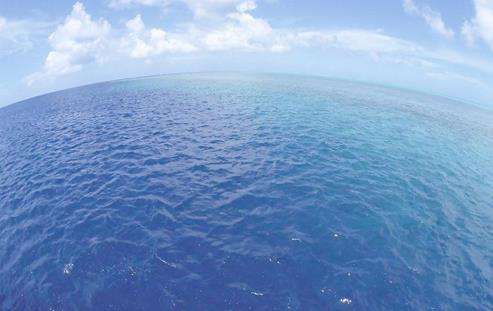The world’s water resources are abundant, and the surface water and shallow groundwater that humans have access are only 0.79%, and they are highly unevenly distributed with geographical and seasonal variations. However, the ocean accounts for 70% of the earth’s surface. If seawater can be easily converted into freshwater resources, to a large extent, it can alleviate the problem of water depletion and pollution.
Water desalination refers to the dilution of 35,000mg/L of seawater to less than 500mg/L of drinking water. The global water desalination yield is about 35 million cubic meters per day, 80% of water is used for drinking water, which solves the problem of water supply for more than 100 million people. That is, 1/50 of the world’s population provides drinking water by water desalination. There are more than 13,000 water desalination plants around the world. As a substitute and incremental technology for freshwater resources, water desalination is increasingly valued by many coastal countries in the world. The direct use of seawater as industrial cooling water is about 600 billion cubic meters per year, a large amount of valuable freshwater resources are saved ; at the same time, the desalinated seawater can be used in agricultural irrigation, food, beverage, ice making and other industries . Sometimes edible salt is also produced as a by-product, which can effectively promote local economic development. Currently, the application areas are mainly in the Middle East, the Mediterranean, Caribbean, Southeast Asia and North Africa, and water desalination is also used on some islands and vessels, it promotes the economic development of coastal areas developed countries and arid deserts.

In order to obtain freshwater from the sea, the seawater desalination methods applied in the world mainly include distillation, freezing and reverse osmosis (RO). The distillation method is to evaporate water and leave the salt, and then condense the water vapor into liquid fresh water. This process is similar to the process of seawater becoming salty, except that humans are extracting fresh water. Another method of water desalination is the freezing method, which freezes seawater to be ice, and the salt is separated while the liquid fresh water becomes solid ice. Both methods have insurmountable shortcomings. The distillation method consumes a lot of energy and generates a lot of scale in the instrument. On the contrary, there is not much fresh water, which is a very uneconomical way. The freezing method also consumes a lot of energy, and the fresh water has a bad taste and is difficult to use. Reverse osmosis (RO) desalination technology has the characteristics of stable and reliable engineering and low cost of water production. By the 1970s, desalination technology has been commercialized in the world. After several product replacements and technological innovation, reverse osmosis desalination has become the most famous desalination technology for high salinity brackish water.
A large reverse osmosis desalination project is often a very complex system engineering. For the main process, including seawater pretreatment and desalination (desalting). Among them, seawater pretreatment refers to the necessary treatment before seawater enters RO membrane, such as killing microorganisms, reducing turbidity and removing suspended solids; desalination (desalting) is to remove salt from seawater through RO membrane, which is the core of the whole seawater desalination machine. The RO reverse osmosis method is a membrane separation desalination method. An external pressure greater than the seawater osmotic pressure is applied to the seawater side, a desalination method in which fresh water is passed through a permeable membrane and salt is trapped.
The reverse osmosis RO method is the most used method for seawater desalination. Generally, in order to reduce the cost, microfiltration and nanofiltration are added in front of the RO membrane to filter some large particles to reduce the “burden” of the RO membrane. If the whole system is ideal, it can be ready to drink. The biggest advantage of the reverse osmosis method is energy saving, producing the same quality fresh water, which consumes only 1/2 of the electrodialysis method and 1/40 of the distillation method. Whether it is seawater or brackish water, it is suitable to use RO desalination technology to desalt. It is the fastest growing technology in seawater desalination technology in the past 20 years, and it is also the preferred method in the world.
Ocpuritch is a high-tech enterprise that integrates development, production, sales, and service into RO seawater desalination machine,clip link to learn more detail about sea water desalination. With its more than ten years of research, development and project experience in seawater desalination technology, Ocpuritch can remove harmful human health components and separate salt in water, and improve the quality of people’s lives.

